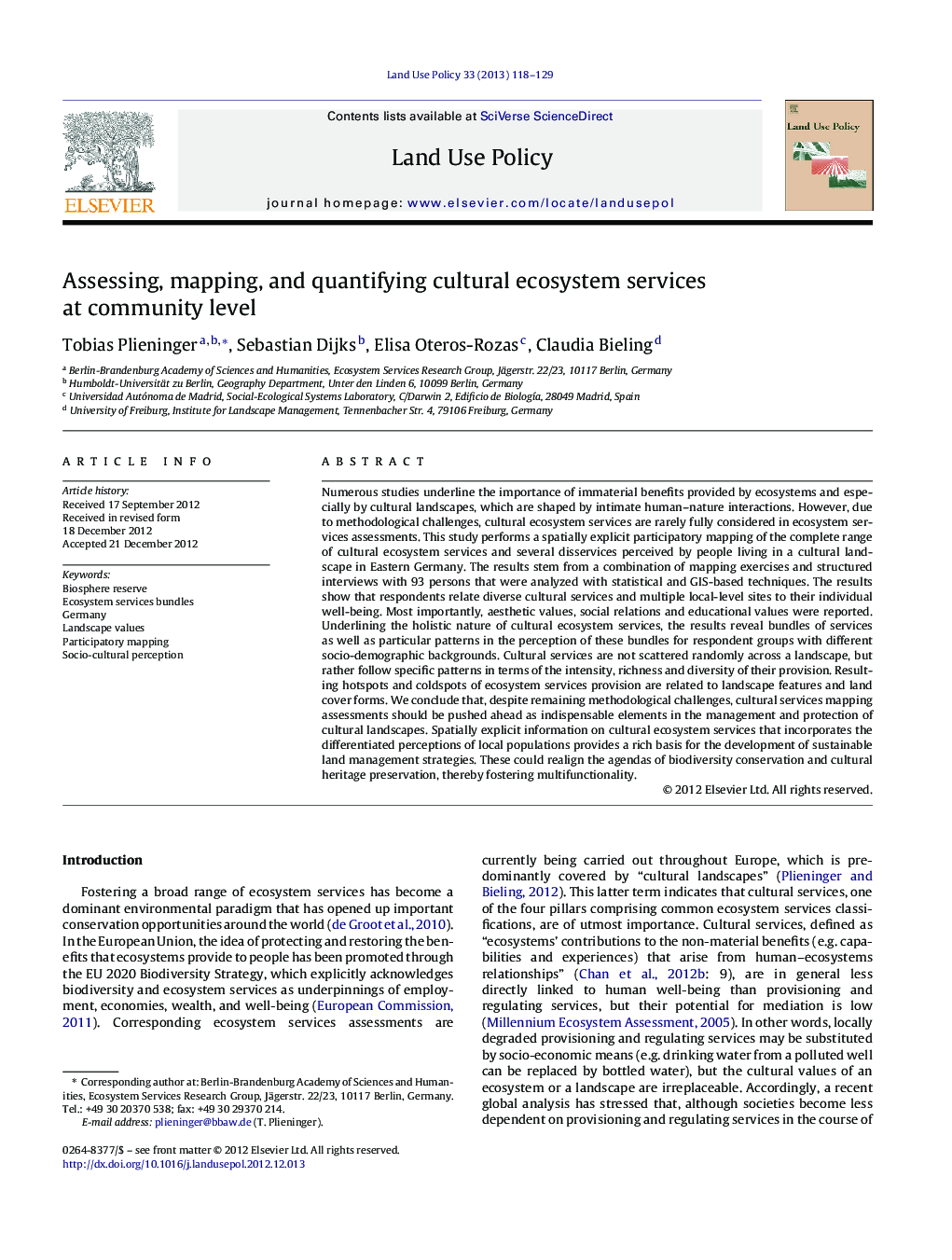| Article ID | Journal | Published Year | Pages | File Type |
|---|---|---|---|---|
| 93137 | Land Use Policy | 2013 | 12 Pages |
Numerous studies underline the importance of immaterial benefits provided by ecosystems and especially by cultural landscapes, which are shaped by intimate human–nature interactions. However, due to methodological challenges, cultural ecosystem services are rarely fully considered in ecosystem services assessments. This study performs a spatially explicit participatory mapping of the complete range of cultural ecosystem services and several disservices perceived by people living in a cultural landscape in Eastern Germany. The results stem from a combination of mapping exercises and structured interviews with 93 persons that were analyzed with statistical and GIS-based techniques. The results show that respondents relate diverse cultural services and multiple local-level sites to their individual well-being. Most importantly, aesthetic values, social relations and educational values were reported. Underlining the holistic nature of cultural ecosystem services, the results reveal bundles of services as well as particular patterns in the perception of these bundles for respondent groups with different socio-demographic backgrounds. Cultural services are not scattered randomly across a landscape, but rather follow specific patterns in terms of the intensity, richness and diversity of their provision. Resulting hotspots and coldspots of ecosystem services provision are related to landscape features and land cover forms. We conclude that, despite remaining methodological challenges, cultural services mapping assessments should be pushed ahead as indispensable elements in the management and protection of cultural landscapes. Spatially explicit information on cultural ecosystem services that incorporates the differentiated perceptions of local populations provides a rich basis for the development of sustainable land management strategies. These could realign the agendas of biodiversity conservation and cultural heritage preservation, thereby fostering multifunctionality.
► We present a spatially explicit mapping of cultural ecosystem services. ► Respondents relate various types of cultural services to multiple local-level sites. ► Different types of cultural ecosystem services are correlated in specific bundles. ► Residents’ perceptions vary across several socio-demographic variables. ► There are specific patterns of connections between services and land cover types.
